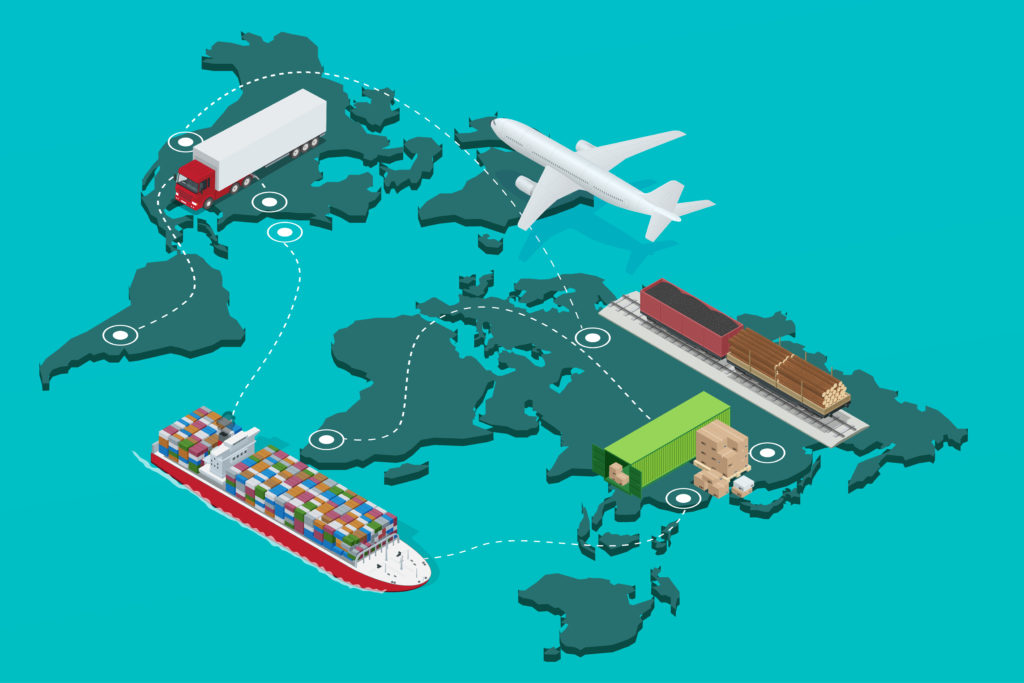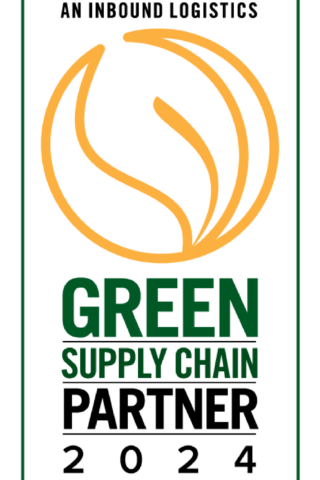This article was first published in the July / August 2018 issue of MHD Supply Chain Solutions.
Rob O’Byrne
Email: robyrne@logisticsbureau.com
Phone: +61 417 417 307
It would be tempting to think of reverse logistics as forward logistics done backwards. Tempting, but wrong. Reverse logistic isn’t simply a reverse gear. Almost everything can change. Products come back in dribs and drabs, not in nearly packaged batches. They don’t come back to predefined schedules. They don’t even come back in the same state in which they went out.
Reverse logistics can also have a dramatic effect on steering a company’s fortunes. Go one way and you can boost profitability, customer loyalty, and brand image. Go another way and you’ll leak dollars, lose customers, and even run afoul of regulations about what to do with stuff that people no longer want. Reverse logistics is therefore worth doing, and worth doing properly.
Looking to real-life examples for inspiration, we can ask, ‘Who does reverse logistics well?’ Companies like Sears, Dell, and Zappos are often pointed to as models to follow for reverse logistics. Yet given the changeable nature of the beast, we also need to ask what ‘doing it well’ means in this context, especially if we want to know how much of others’ success can be applied to one’s own organisation.
First, Understand ‘What’ and ‘Why’
Let’s take a step back. Reverse logistics, while not being the opposite of forward logistics, is still about products moving backwards in the supply chain. Often, the term reverse logistics is used for products that have already reached the final point of sale or been bought by a customer. However, remember that products or subassemblies that never made it out of the factory may need to travel backwards one or more stages along the supply chain. This also qualifies as reverse logistics.
Reasons why reverse logistics are necessary can be diverse. Customers may find a product to be faulty or unsuitable for their needs. They may have ordered more than they need. They may have simply changed their mind. Manufacturers may recall stock because of flaws or to replace older products with newer ones. They may recall inventory from retailers or reprocess it because it has passed its sell-by date or demand is insufficient.
Many Views of Reverse Logistics Performance
Different parties judge whether reverse logistics is done well or poorly in different ways. For customers, the quality of reverse logistics revolves around the ease with which they can return a product and be reimbursed. US retail pioneers Sears and J.C. Penney understood this a century ago, when they offered money-back guarantees to their clientele. That meant that customers felt safe when shopping, increasing sales and customer loyalty.
From a shipping standpoint, reverse logistics works well when the product being returned is routed directly to the correct location. In a manufacturing plant, reverse logistics performance is tied to the money or materials that can be recovered cost-effectively from the returned product. This might be by reselling, repairing, remanufacturing, or reclaiming parts of value. For regulators and the public, reverse logistics may be judged by how safe and how green the process is, for example, recycling products instead of throwing them into a landfill.
Some estimates put product returns at 6% of total sales revenues. In addition, returns typically cost more to handle than outbound shipments – 3 to 4 times more for traditional retail companies, for example. Clearly, successful reverse logistics cannot be left to luck. A plan is necessary, possibly based on one of the following strategies.
Reverse Logistics Strategy 1: Don’t do it!
We’re not talking about just sweeping returns under the carpet. Instead, we need a way to constructively avoid the need for reverse logistics.
- Persuade the customer otherwise. IT vendor Dell, for example, handles requests for returns via its support organisation. Reps work with customers to get computers installed and working as required, rather than shipping them back. Customer satisfaction goes up, reverse logistics costs come down.
- Pay for the return not to happen. Procter and Gamble developed its ‘zero returns’ policy a couple of decades ago. Also known as a swell allowance or adjustable-rate policy, there is no physical return of products. Instead the supplier (such as P&G) issues a credit allowance.
- Get product marketing involved. Reverse logistics is often seen as the last part of a product lifecycle. Yet reverse logistics is largely the result of marketing and product design decisions at the beginning of the lifecycle. When marketing sees why products are being returned, it can improve product features like quality, packaging, and usability.
- Forecast demand better. As market and buying trend data becomes more abundant and IT systems more connected, retailers can better estimate demand and adapt their ordering. Sectors like publishing of software, books, music, and so on, also offer another way to reduce returns .They increasingly make their wares digital instead of physical and sell on demand.
Clearly, successful reverse logistics cannot be left to luck. A plan is necessary.
Reverse Logistics Strategy 2: Make it Painless
Pain is a sign that something is wrong. When something is wrong, it usually ends up costing more, either in real money or lost opportunity.
- Make it painless for customers. Increasingly, ecommerce vendors understand the advantage of an easy-to-print, free-of-charge return shipping label for a customer to stick on a box and return by post. The cost to the vendor is compensated by increased customer satisfaction and brand loyalty.
- Use simple, streamlined processes. Take the hurdles like who pays for the shipping out of the equation. Sort items early in the return journey, routing products directly to their correct destination, whether for resale, refurbishing, or other means of disposal. Note that this may require extra training for people who will do the sorting.
- Automate. A barcode on a return label can be scanned, and refund, storage, disposal and other decisions taken automatically. Retailers have often been faster than manufacturers to move to the requisite technology.
Reverse Logistics Strategy 3: Make it Profitable
It makes sense to run reverse logistics as a profit centre with corresponding KPI and metrics. Speed will be an important factor. The faster a returned item moves through the system, the greater the net value that can be recovered.
- Design reverse logistics into operations. Network analysis will be crucial for finding the best configuration of return centres, given factors like retail locations and transport facilities with backhaul possibilities. Grocery retailers have been innovators here, obliged to maximise performance from returns in the face of already slim profit margins on forward logistics. Several large 3PL now leverage their resources to offer tailored reverse logistics services.
- Design reverse logistics into the business model. Online shoes and apparel seller Zappos has made a name for itself with its return policy extending up to 365 days. Supported by reverse logistics, this becomes a means of encouraging consumers to buy more and to recommend Zappos to others. Zappos’ focus on products of a certain type and within a certain range of weight and volume helps simplify its reverse logistics processes.
Now is the time to stand up and be counted among those who do their reverse logistics well.
Different Solutions for Different Needs
There is no one-size-fits-all solution for reverse logistics even within the same industry sector. In the fashion sector for example, US department stores like Saks 5th Avenue and Nordstrom have second-tier sales outlets (off-5th and Nordstrom Rack) to which they can hand off excess inventory at marked down prices. On the other hand, a very high-end fashion company might insist that all excess inventory was returned to the factory for recycling, rather than see its brand in low budget shops.
In addition, getting it right once is no guarantee of getting it right the next time. Pharmaceutical company Johson & Johnson conducted one of the most skilful product recalls ever, when it had its cyanide-adulterated Tylenol product returned from pharmacies and shops in 1982. Unfortunately, it did not exercise the same skill and transparency in recalling its Motrin product in 2009, to the extent that congressional investigators became involved to find out what was going on.
Who will do Reverse Logistics well in the future?
The immediate future of logistics and distribution is omnichannel – order anywhere, buy anywhere, including web, post, and physical point of sale. Recent survey information from magazine DC VELOCITY suggests that supply chains are moving towards omnichannel mostly to increase sales, market share, and customer loyalty. Improving margins comes in as a distant fourth reason. Yet margins are likely to be under even more pressure because of the added complexity of omnichannel reverse logistics.
Good solutions are therefore likely to be specific to the supply chains thay serve and leverage the specific configurations of those supply chains. For example, online retailer Amazon recently moved to buy physical retailer Whole Goods. For reverse logistics for this part of its business, Amazon could allow or even encourage any returns from online sales to be made in-store. This would increase the number of visitors to the physical store and decrease reverse logistics costs by batching together returns instead of transporting them one by one as small parcels.
Whatever the reverse logistics solution, it will need to be planned. Also, it might not look anything like your forward logistics. But for all the reasons above, including financial, reputational, ecological, and regulatory, now is the time to stand up and be counted among those who their reverse logistics well.










